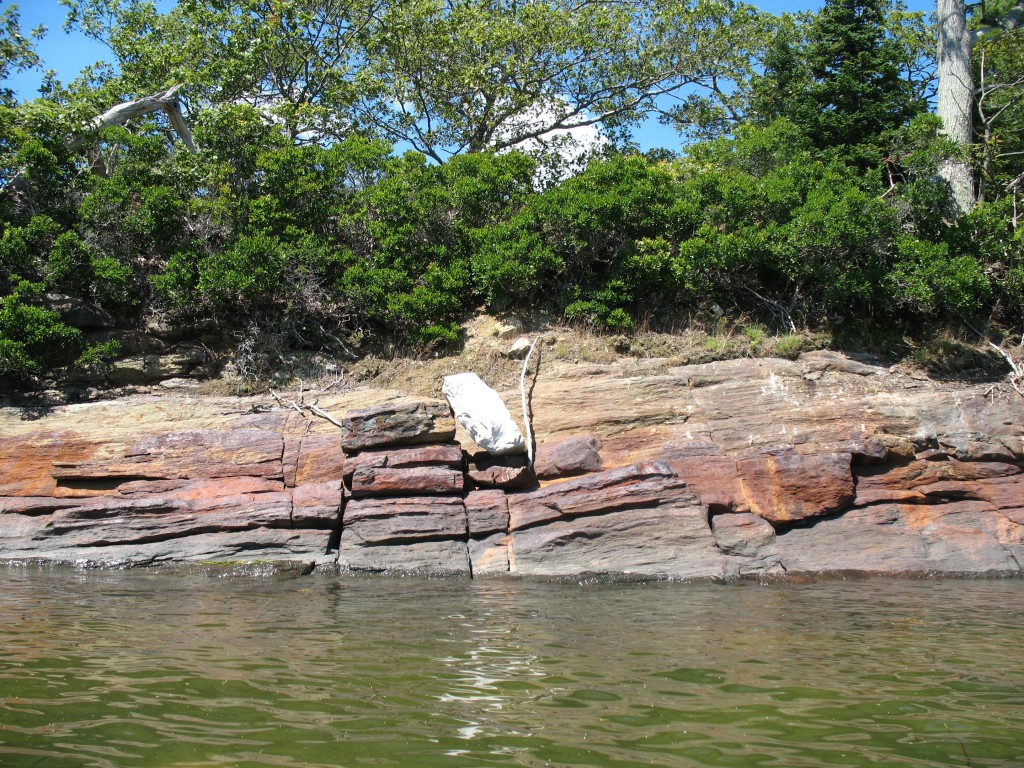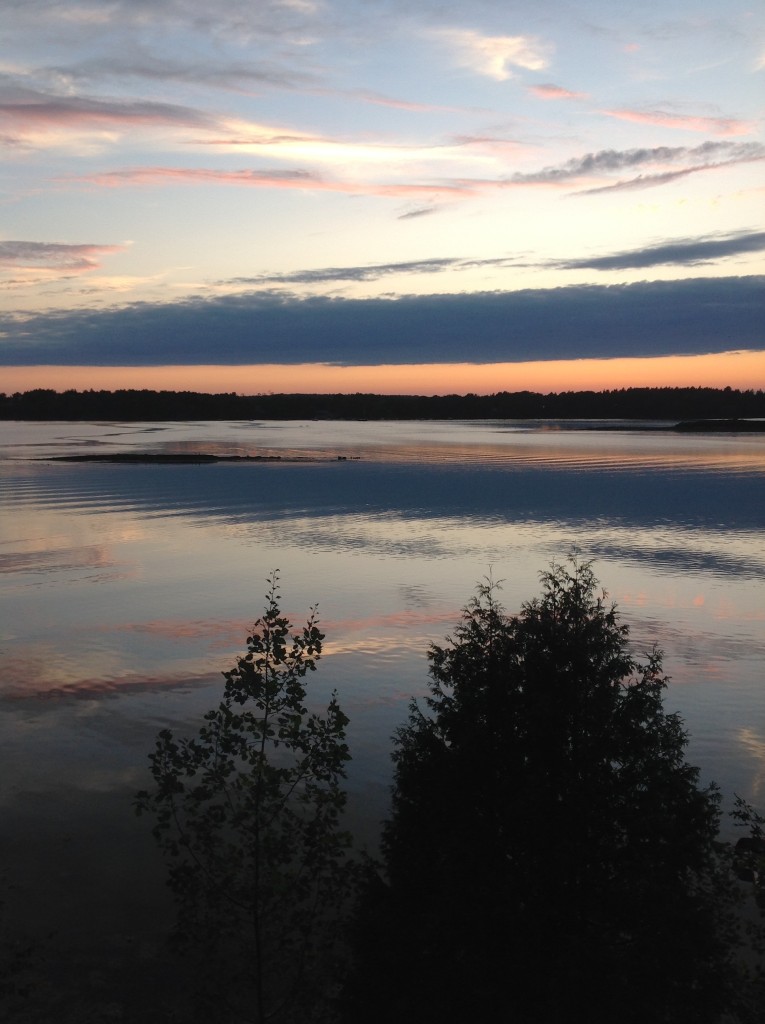On September 13th in 1853, Thoreau set out from Boston Harbor on his second trip to Maine. “It was a warm and still night,” wrote Thoreau, “and the sea was as smooth as a small lake in summer, merely rippled.” A little later, he noted about the view from the sea, “We behold those features which the discoverers saw, apparently unchanged.”
This September’s early weeks seem also to be “merely rippled,” the sort of season that invites one out on the water. The summer crowds have dispersed, and as you float in solitude, or paddle languidly, “those features which the discoverers saw” are “apparently unchanged.”
Two Times to the Sea
September 8th: It is warm, and the day is suffused with a late summer, insect-hum; such days suggest pause, equipause, we might call it, in honor of the oncoming equinox.
I come in to Ragged Island from the west on mildly-ruffled water with a light north wind opposing the incoming tide, and I ride on today’s little sea-breathing, the swell that swells only to a few feet and then falls. The stubby rock arms of the coves reach a few meters into the sea, and, on a calm day – this one – they create little protected inlets, where the seaweed sways with the inflow and the tidal rocks draw breath with each outflow.
On either side of me, there’s the emerald backside to shoaling water with its inset of opal-white as swells arrive and lift themselves on the ledges’ backs.
Today’s tide – very high, an 11-foot one – lands me on the sea-grass fringe of the northwest side, where the small beach features a huge drift-log – say 20 inches in diameter – perfect for sitting. I notice that the long arm of rock that reaches west at beach’s edge has a 5-runged, wooden ladder perched atop a broken-off boulder; I don’t wade to it and climb, but perhaps I should have. Ladders have their lure; they go up, the direction of life. But on this day, I’m content with sea-level surveying.
Amid the sea rubble, the remains of a duck, its wingbone disappearing into the mass of feathers still intact, the meat all gone – fly until you’re food.
Sitting on my beach-log and looking over all the little, ground-down pieces of the beach, piled a little deeper at the tideline – wash and grind, wash and grind.
On all sides of this island, the rocks are water-battered and rubbed smooth up to heights of 20 feet; it is talk of towering waves.
Later, I read that a California exercise physiologist (who among other projects, has measured the Vo2 Max of mountain lions) has measured big wave surfers’ heart rates (HRs) and found that they stayed at an astounding 180+ throughout a 3-hour stint of surfing (this at the legendary Mavericks break). Even sitting on the beach looking out at the break, their HRs soared. This makes me wonder what my HR is while paddling, even contemplatively. Probably there is some rising graph that tracks with the liveness of the water I’m riding (or watching). It makes me think back to the wave-battered stones on the island; I feel my pulse jump…a bit.
September 15th: a paddle to and from Little Whaleboat Island. Sightings: 4 loons, and they were either molting or first-year loons; clearly loons, but without the distinctive patterning of neck and breast; also, the water where they were hanging about was rife with little loon feathers. As in years past, they were in the indent of water between Lower and Upper Goose islands. I floated with them and “vocalized,” even getting single note answer from one, though “answer” is too strong a word.
Today, a pleasing mix of quiet and ruffled water: in the lee of the Gooses, and, later, out by Little Whaleboat, the water was nearly calm, with a light brush of west wind. On the way out, between Upper Goose and Mere Pt., the water was bumpy, with tide running out and wind amplifying it a bit from the west. Then, the early crossing to L. Whaleboat was choppy, again with wind running 90 degrees off of tide. A mix of waves from west and southwest, but at a foot+ simply enjoyable.
At all the usual pullouts, there’s empty sand and strand; the flattened grass at the “secret” campsite on the south end of Little Whaleboat is starting to rise; the Goslings have gone quiet, as has the anchorage in their shelter.
One butterfly making its way southwest across the reach of water, making perhaps a knot better than I am. Such stamina. A few seals, curious periscopes. Perhaps the last week for the ospreys, who still keen at my approach, even as their nests are long empty; they hang in the air facing the southwest – perhaps they too feel migration’s call.
Last note: The 60-year-old apple tree I’ve watched for years on my favorite islet is, as this spring announced, truly defunct; already, it is weathering to sea-grayed wood. I looked for shoots of offspring, but the miracle of apple islet doesn’t seem set to repeat itself. The islet reverts from eden to the primrose-lined usual, its “features which the discoverers saw, apparently unchanged.”
Added note: what didn’t happen to me: video of a breaching whale and kayak-folk from the BBC: http://www.bbc.com/news/science-environment-3399


